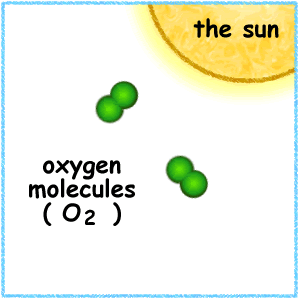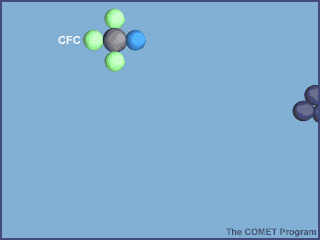UV ozone generators, or vacuum-ultraviolet (VUV) ozone generators, employ a light source that generates a narrow-band ultraviolet light, a subset of that produced by the Sun.

Ozone in the lower atmosphere is an air pollutant with harmful effects on the respiratory systems of animals and will burn sensitive plants; however, the ozone layer in the upper atmosphere is beneficial, preventing potentially damaging electromagnetic radiation from reaching the Earth's surface.
Ozone is present in low concentrations throughout the Earth's atmosphere. It has many industrial and consumer applications.

# CFCs and halons belong to the haloalkanes.
# Chlorofluorocarbons (CFCs) are compounds containing only carbon, chlorine and fluorine (no hydrogen). Halons are compounds containing only carbon, bromine and other halogens (no hydrogen).
# Chlorofluorocarbons (CFCs) are sold under the trade name of Freons.
# CFCs are used as working fluids in refrigerators and air conditioners because they are gases at room temperature wich can be easily liquified by compression and because they are stable and non-toxic
# CFCs are used as foaming agents in the production of polystyrene and polyurethane foam plastics used for insulation and packing materials
# CFCs are used as a propellant in spray cans for paint, insect repellants, deodorants
# Halons are used in fire extinguishers because they are dense, non-flammable liquids.
Bromochlorodifluoromethane, CF2ClBr, is commonly used in halon fire extinguishers.

* The only long term solution to solve the problem of depletion of the ozone layer is to phase out the use of CFCs (Montreal Protocol of 1987 and subsequent modifications)
* Some CFCs can be replaced by HCFCs (hydrochlorofluorocarbons), compounds containing at least 1 H atom. The C-H bond makes these compounds more reactive in the atmosphere so they are destroyed more quickly and so are less able to diffuse into the stratosphere

R-22 as a CFC.

R-134a as a Non CFC
No problem...
ReplyDelete